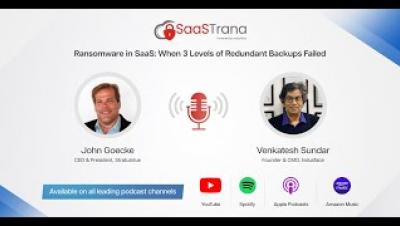Security | Threat Detection | Cyberattacks | DevSecOps | Compliance
Backup
Schedule and Automate MongoDB Backup and Restore on Your Kubernetes Cluster
In this blog we will guide you step by step through using CloudCasa to backup and restore NoSQL databases such as MongoDB operating in your Kubernetes environment. Before we begin, let’s have some basic understanding of the database under test. NoSQL databases provide a variety of benefits including flexible data models, horizontal scaling, lightning-fast queries, and ease of use for developers.
GitHub Restore and Disaster Recovery - Better Get Ready
Protect your business, bounce back from disasters: learn the best practices for a reliable GitHub Restore and Disaster Recovery strategy that ensures business continuity.
CloudCasa and Ondat Bring Best-of-Breed Bundled Offering for Stateful Applications
CloudCasa by Catalogic and Ondat have joined forces to offer customers a combined solution stack to run and manage stateful applications on Kubernetes and provide best-of-breed performance, availability, data protection and recovery. In this episode of TFiR: Let’s Talk, Swapnil Bhartiya sits down with the executives of both companies, CloudCasa COO Sathya Sankaran and Ondat CEO Richard Olver, to talk about their partnership.
3 Ways To Address Your Kubernetes Data Protection Challenges
Kubernetes is an open-source container orchestration tool originally developed by Google for managing microservices or containerized applications across a distributed cluster of nodes. It is widely thought that “Kubernetes is key” to cloud-native application strategies. Kubernetes (K8s) runs over several nodes, and the collection of nodes is called a cluster. K8s clusters allow application developers to orchestrate and monitor containers across multiple physical, virtual, or cloud servers.











